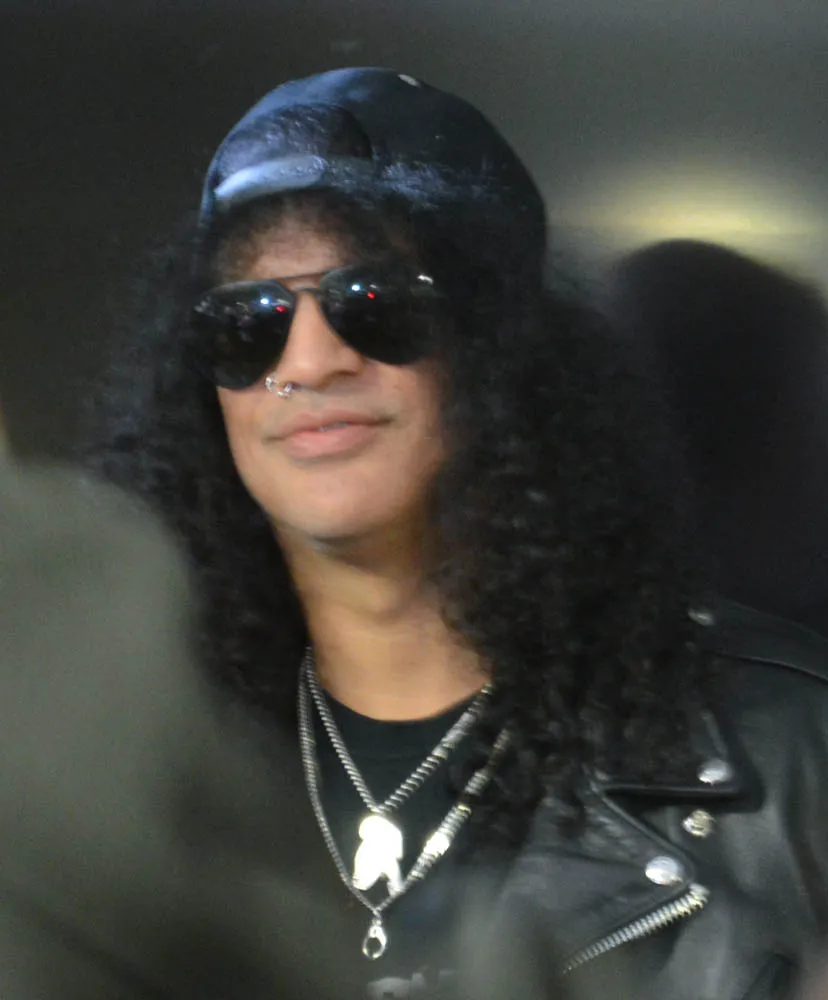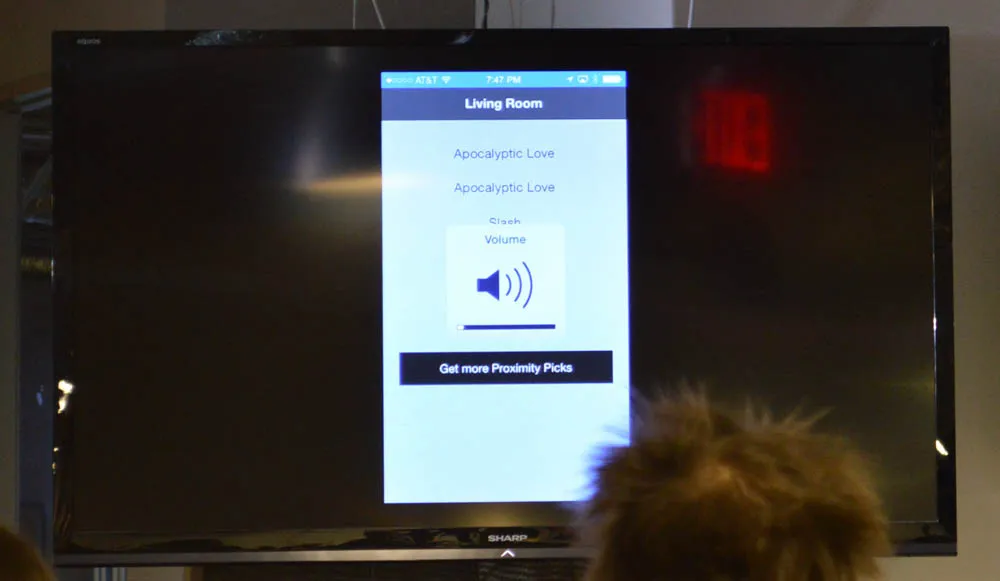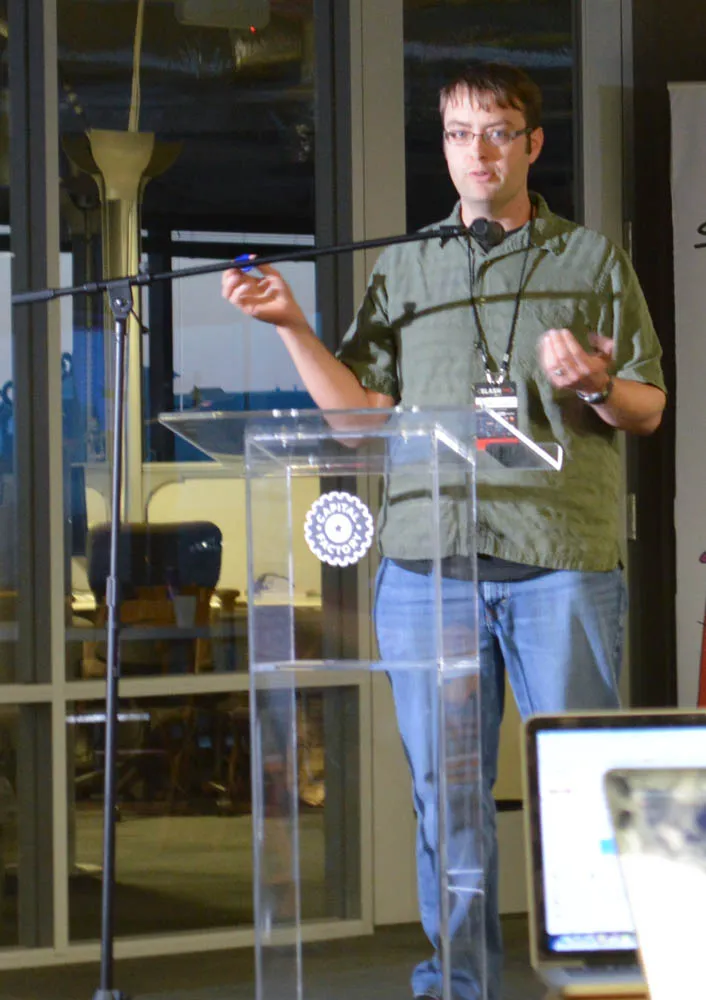Slash Hackathon for SXSW
On Wednesday, I got a chance to pitch my six-hour hackathon project to Slash (lead guitarist for Guns and Roses and Velvet Revolver), tech blogger (and Startup Liason Officer for RackSpace) Robert Scoble, and the inventor of BitTorrent, Bram Cohen. The idea behind the hackathon was to create an app or web site for artists to connect with their fans, and if Slash thought your idea was the winning one, he’d use it for his upcoming album in 2014.

I came down to the Slashathon with an idea all thought out and ready to go, basically an app for users to try upcoming music from albums and rate it as hot-or-not. Nothing too crazy, but I don’t particularly know what a band would want to use to engage their fans, so I wasn’t particularly tied to the idea.
This hackathon had more sponsors and API partners than I had ever seen at one event - some of them had just created API’s for this event and released them to the public. Muzik Headphones came with their developer-friendly wireless headphones, which I didn’t get a chance to include in my hack, but would like to put into a different project soon. Geeklist organized the event with The Collective, and it was held at the Capital Factory in downtown Austin.
After watching Qualcomm’s team show off their Gimbal beacons, I decided I wanted to use them for my project instead of my original idea. I’ve been involved in a few projects around location awareness and context, but haven’t had a real chance to sit down and program with any of the beacons yet. A hackathon is perfect for this sort of thing, because if I needed help, Qualcomm had a developer right there to point me in the right direction.
My first idea was to create a whole-house audio system that just used your phone, the Gimbal beacons, and the Muzik headphones with Spotify playlists. Instead of putting in an expensive whole-house custom audio installation, just put a few inexpensive beacons in the different rooms of your house, and have an app that changes up the playlist for you. Ideally, you’d smoothly transition in and out from the playlists, but in a six-hour hackathon, that’s the sort of detail that can get left for the future.
This idea worked pretty well - I had some problems with the Spotify iOS SDK, because I had a Spotify free account (a no-go for streaming, you need Premium), but once I got past all of that, I brought in the Gimbal SDK, and quickly had an app that could detect the different beacons. It was a quick jump from just printing out “New beacon detected” to switching the Spotify stream, so then I went ahead and made the app’s background switch to different iOS 7-style backgrounds, based on your location. This is a nice effect, but I don’t think anyone noticed during my demo.
After talking my idea with the Qualcomm Gimbal team, they asked how it would help artists, and then they suggested the idea of letting the musicians set up custom playlists tied to these beacons - I called them “Proximity Picks”, because they look kind of like Guitar Picks. Artists could include one with their box sets, CDs, or other physical sales, and anyone with my app could listen to the playlist, for instance if you brought the pick to the office.
 ]
]
This was a lot better idea than just the whole-house audio, though you could certainly do that as well with this technology. Because artists could now sell these picks, I added PayPal integration to the app, and basically called it done. We only had from 12pm-7pm to work on the project, so it was a short hackathon.

It was a little bit nerve-wracking to pitch to the hackathon judges, but I felt like I had a decent story behind the project, and Robert Scoble seemed to really like the idea behind a context-aware music mobile app. I ended up winning third place overall behind SlashTV and Retune, and then first place for the Gimbal and PayPal integrations. I also used Spotify as the music provider for the app.
Overall, I liked this hackathon - it had a lot of different API sponsors, which is great, and it’s in an area - music - where I’ve never done a project before. Now that I’ve used the Gimbal beacons, I can recommend using them for location awareness on other projects, which is always nice.
[Thanks to my wife, Cheri for the photography!]